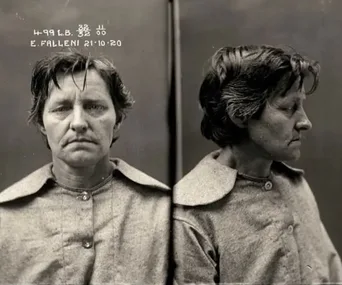The Aussie singer reveals why she’s going it alone in the music business and talks of her exciting family plans.
Deni Hines is finally free. Free of the shackles of growing up in the shadow of her famous mother Marcia. Free of the need to impress record label executives in order to make her next dollar. And free of the insecurities of youth.
Starting in the business almost 20 years ago and having sold more than 2.5 million albums in Australia, Deni made the decision to go it alone and set up her own record label — 3DE (3 Dimensional Earth) — a move which has given her a renewed confidence and steely resolve.
Looking far younger than her 36 years, thanks to the combination of amazing genes and her strict organic-vegetarian diet, the self-described, “conscious hippy” is bounding with a contagious energy when she meets Woman’s Day by the water on Sydney’s Northern Beaches.
In this interview Deni talks candidly about her new love, life and everything in between.
How is your new album Like Water For Chocolate going?
As an independent artist it’s hard. Even though I’ve sold 2.5 million records it has still been difficult to scratch through and go, “Hey, hello, over here!” I keep saying to my manager, “It’s a conspiracy!” She says it’s not but I know there is!
Did you always want to start your own label?
When I was little I always used to say to myself that I wanted to have my own record label and people used to laugh at me. And for a little girl born on Crown Street [in inner Sydney] that was a big dream, but now I’ve done it. I may only have myself on it but I’ve done it!
Has being independent changed you?
Yes, it makes me want to go into every radio station in every city with a stereo and sing my single for them, because if they can play that, “Hey, hey, you, you, I don’t like your girlfriend” stuff … well, I can fart better than Avril Lavigne sings.
What artists would you like to sign?
If I had the money I’d sign Emily [Williams] from Australian Idol — I’d so take that girl. She can blow.
You’ve lived in the UK a lot. Would you ever go back?
Yeah, I want to go overseas in six months. My partner Tom lives in England and it’s really had having a boyfriend who is 10,955 miles away, so I really want to get out of here in six months.
How did you and Tom meet?
We met 10 years ago in England. We never got romantically together — we were attracted to each other but I was married at the time and he was a friend. And then it got weird with the tension. So then he left England and went to South Africa and I left England and went to Australia — we lost each other for eight years. Then he found me on my personal website — NOT on a dating website — and left me a message saying, “Deni, it’s Tom from way back” and I was like, “Where the **** have you been?” Then we chatted and I booked him a flight on my frequent flyer points to come out and see me.
Really?
Everyone around me, even my mother, who may be the oracle but she doesn’t know everything, took me aside and said, “What are you doing giving all your frequent flyer points away — you haven’t seen this guy in eight years!” And I said, “Mum, listen. Cut the cord! Wait till you meet him.”
Did he know much about you?
He knew I was a singer but I didn’t really tell him much more because of that whole class thing. I didn’t want him to know I was over there on record company money while he was living in a tiny s**t box. So really he had no idea of my background. Then when we met up last year he flew in on the day before the Australian Idol final — and I said to him, “Baby, I’ve got this little gig tomorrow night,” and he said, “Cool, cool”. Then the next day we wake up and I take him to the gig — which was the Australian Idol Finale with 80,000 people on the steps of the Sydney Opera House. He watches me sing Stomp with my mother and then afterwards he says to me, “Oh, so is that what you do babe?”
He’s not in the business?
Thank God, no — he’s a carpenter!
That must be refreshing?
It is. I tell him, ‘Hurry up and finish the course baby. You have to make us a bed!’
Could you see yourself moving back to London?
I would go back there for work, certainly, but the two places I want to live are the south of Spain — Granada — and Australia.
How would that nomadic lifestyle go with raising a family?
I’ll get pregnant in Spain. I’ll have the baby in Australia because we have better health care out here. And then I’m thinking about home schooling because I really don’t like schools.
Why?
You get to see lots of stuff and travel and learn a hell of a lot more than you ever could in a classroom.
That’s a huge amount of responsibility to take on…
I’ve been on the road since I was 15 so I’m happy to just take a break. And Tom’s smart too. He can do it all. I’ll do all the music and he can do all the essential stuff.
What essentials would you teach your kids?
Firstly, I wouldn’t go into maths until they were six or seven because I don’t think their little brains can take it. So I’d teach them music and drawing and tactile stuff. They’ll have lots of interaction with other people, too. I think it would be really cool. With a grandmother like my mother, a mad Dr Grandfather who’s my mum’s husband, three brainiac cousins, Tom’s mum who’s a primary school teacher, and his big sister who works in daycare, I think I’m covered. And his father is a historian too! I think it’s safe to say the kid will be pretty intelligent.
You’re into organic. Is that hard and why did you choose it?
Eating outside of tours is easy. It’s hard when I travel. When I was doing [stage musical] Dusty it was hard to stick to my diet — it’s only hard because I have to get on the net and look up where I can buy organic food in every city I end up in. I’d rather not eat than eat s**t.
Really?
My mum and her husband have started growing their own vegetables and I went up there and they have the most enormous pumpkins. She gave me six of them and around 1000 limes!
Some people forget food grows on trees.
I don’t because I don’t eat animals — to me it’s important. The reason I am the way I am is that back in school they did an experiment where they show you a test tube and put different chemicals in it and they show you their reaction. Well I look at my body like a test tube and I look at the chemicals as preservatives and I don’t really know if those preservatives are going to bite me on the a**e in 30 years.
Would you go bush?
Yeah, I so would. It’s quite scary. I had a few years off before I did Dusty and I was living in Lismore walking around barefoot every day talking to horses and growing vegies. I’m a big hippy! My mum looks at me and goes, “Deni, you’re more of a hippy than I ever was.” Tom and I want to buy some land and set up a B&B and get all domesticated. I want a cow, but he said I can’t have a cow.
Any plans to take Dusty to the UK?
We were planning to go there this year but it looks like it’ll be June/July 2008. So my plan is to move to the UK in six months and then six months after that, Dusty will be ready.
London is such an anti-organic city — how would you survive there?
Actually, I wouldn’t live in London. I’d live in Cambridge — that’s where my man lives. His parents live in Norwich, too, and it’s amazing — old homes with big timber beams and gardens. I don’t like London, so I couldn’t live there. No-one moves to London for the city. They move there to make money which makes them really hard people and a hard place to live if you are organic!
Do you work out?
Hell, no. I’m allergic to the gym. I don’t eat bad food.
Would you give music up for kids?
They can co-exist I think. I’d stop putting so much focus on my music though. I’ll have kids one day and I won’t stop. My clairvoyant had this vision and she said to me, “I see you living in this house with your husband or a partner and you’re on the phone rocking a baby trying to do business and you’re juggling all these things.”
What would you do if your child chose the same profession as you and your mother?
Third generation! I’d say, “Haven’t you learnt?” No, as long as you’re happy and can sing in tune, then all the power to you. If my child comes out tone deaf because it has its father’s lack of musical content, then I’ll encourage them to draw!
You were in Skating On Ice. Would you ever do another reality show?
Not unless it’s something I can get fit on. I don’t want to sit there with cameras in my face. Some days I don’t even leave the house and do not get out of my pyjamas till 2pm. They asked me to do Celebrity Big Brother and I went “Nope … I will kill people. I will go to jail!” And if Big Brother told me to eat white bread or white sugar, I would kill him.
You’ve been married twice, would you marry again?
Never say never. If anyone is dumb enough to ask me again, yeah! I was in my 20s when I got married and my best piece of advice is not to get married in your 20s. You change so much. I know that now I’m 36! I think Tom’s a good guy, but I’m not in a rush to get married now. I’d like to hold out a few more years and chill out. It’s not like I’m going to die in six months.
Deni’s Album Like Water For Chocolate is out now. She’s currently touring nationally.
Newsletter conversion description. Get the latest in your inbox.










.png?resize=380%2C285)




























